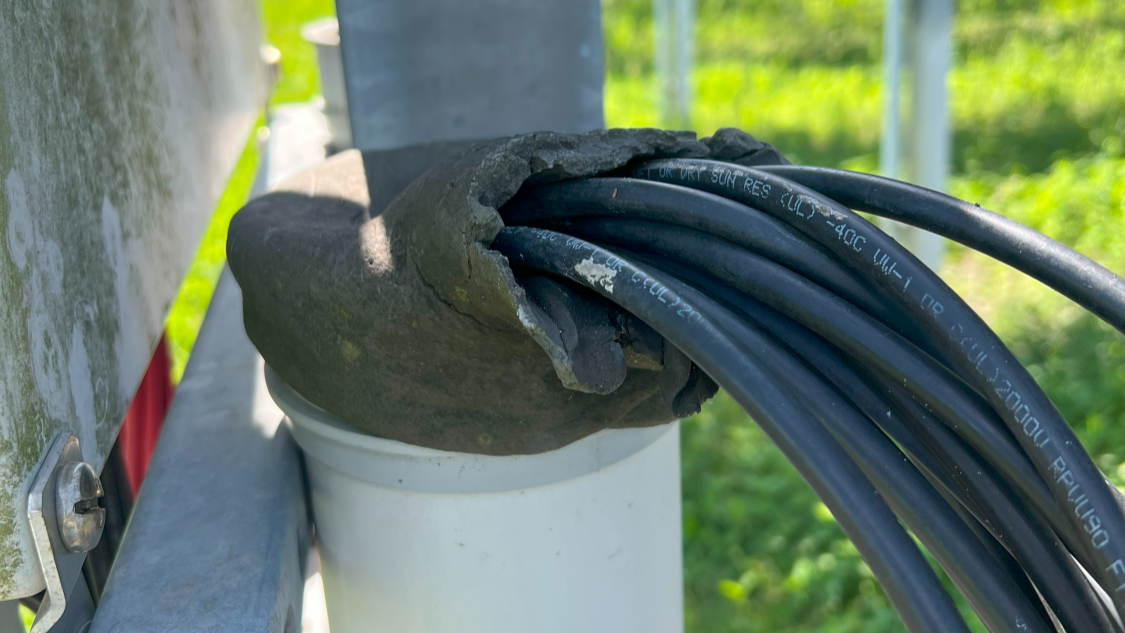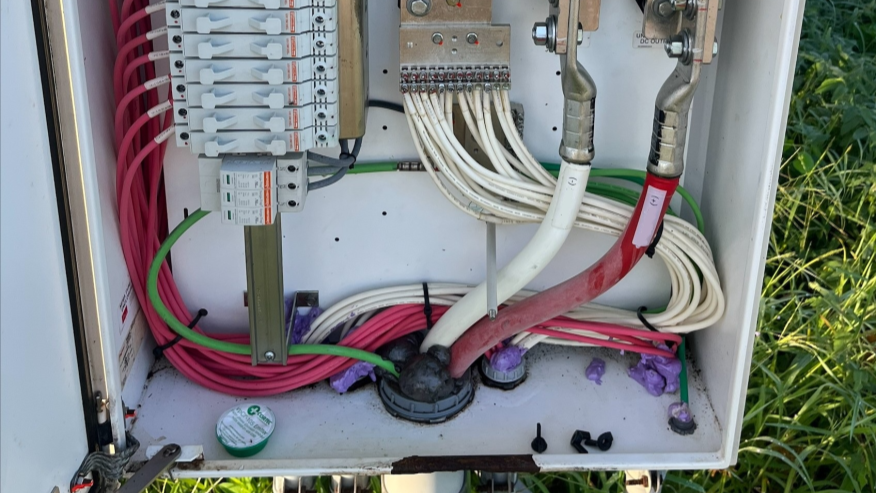Key Takeaways
- Using code-listed sealants is crucial for passing inspection and preventing moisture-related failures.
- Commonly used products like duct seal and foam are not NEC-compliant for conduit sealing.
- Solar installers should always select sealants tested for conductor insulation compatibility.
- Proper conduit sealing enhances system performance, safety, and longevity, especially in residential rooftop and underground solar applications.
- Investing in NEC-compliant techniques demonstrates professional commitment and builds customer trust.
Why conduit sealant matters in solar installations
Sealants may not be the first thing that comes to mind when designing or installing a residential solar system, but they can make or break the long-term safety and reliability of your project.
Moisture infiltration, condensation, and thermal expansion inside conduits aren’t just nuisances; they can lead to insulation damage, ground faults, or premature equipment failure.
For solar installers working with roof penetrations, external conduit runs, and indoor-to-outdoor transitions, using the right sealant isn’t optional; it’s required by the National Electrical Code (NEC).
NEC 300.5(G) and 300.7(A): What they say and why they matter
Two specific code sections guide the use of conduit sealants:
- NEC 300.5(G) – Underground Installations
Conduits or raceways where moisture might contact live parts must be sealed or plugged. Spare or unused raceways must be sealed as well. Importantly, the sealant must be identified for use with cable insulation, conductor insulation, bare conductors, shields, or other components.
- NEC 300.7(A) – Raceways Exposed to Different Temperatures
Raceways that transition between temperature zones (e.g., from indoors to a rooftop or through cold storage walls) must be sealed to prevent warm air circulation that causes condensation. The same product compatibility requirements apply.
For solar installations, both situations commonly occur:
- Underground runs to the main service panels.
- Rooftop-to-indoor penetrations where temperature differences lead to condensation.
Correct sealing isn’t optional; it ensures NEC compliance, safer installs, and fewer callbacks.

Common mistakes: Why duct seal, foam, and putty don’t cut it
Installers often use common sealants out of habit. But these popular choices aren’t compliant:
- Duct Seal/Putty: Deforms permanently under thermal cycling and vibration. Over time, gaps appear that allow moisture ingress.
- Expanding Foam: Not tested or listed for conductor compatibility; many foams are degraded by heat and UV exposure.
- Fire Barrier Putties: Designed for firestopping, not for airtight/microbial sealing in conduits.
Remember this
If it’s not tested, listed, and labeled for conduit sealing, it won’t pass inspection, and it won’t protect your solar system long-term.
Recommended products for NEC-compliant conduit sealing
Here are tested and approved solutions solar installers can rely on.
1. Polywater AFT Duct Sealant
- Non-shrink, non-hardening, designed for conduit applications.
- Remains flexible under temperature cycles and mechanical vibration.
- Product page: Polywater AFT
2. Polywater ZipSeal
- Expanding foam sealant specifically rated for electrical duct sealing.
- Adapts to conductor movement and maintains a long-term seal.
- Product page: Polywater ZipSeal
3. Dura-Line Hydra-Seal
- Mechanical seal system for pressurized or wet ducts.
- Provides long-term re-enterable sealing for underground conduit.
- Product page: Dura-Line Hydra-Seal
4. Roxtec UG Conduit Seals
- Modular mechanical seals are ideal for multiple cables in large conduit sleeves.
- Suitable for buried or exposed conduit in harsh environments.
- Product page: Roxtec UG™
5. Appleton O-Z/Gedney Conduit Seals
- Heavy-duty mechanical seals for hazardous, industrial, or solar+storage projects.
- Widely specified in commercial/utility PV projects.
- Product page: Appleton O-Z/Gedney
Step-by-step guide: How to properly seal conduits in solar installations
- Identify sealing points: Underground conduits, temperature transitions, and rooftop penetrations.
- Choose the right product: Select an NEC-compliant solution listed with conductor insulation.
- Clean the surface: Remove debris, moisture, and dust before sealing.
- Apply per manufacturer specifications: Follow fill depths, cure times, and installation orientation.
- Inspect your work: Ensure continuous seals with no gaps or voids.
- Label and document: Use sealant products’ color indicators or labels for inspector clarity.

Building safer solar systems through code compliance
Shortcut methods like duct seal or spray foam might seem convenient, but they won’t last, and they won’t pass code. As solar installers, our goal is to build systems that are dependable, efficient, and safe for decades. By using NEC-compliant conduit sealing practices, we add another layer of reliability to every installation.
Take the Next Step Toward NEC Mastery
Conduit sealing is just one detail in a much larger code compliance picture. To truly master solar installation design, join Bakertech’s Residential Grid-Tied Solar Design course.
This hands-on program equips you with the skills to design NEC-compliant PV systems, properly size conduits and conductors, integrate rapid-shutdown systems, and build solar installations that last.
Whether you’re new to the solar industry or an experienced electrician looking to expand, this course bridges theory with real-world practice.
Start today and build the foundation for safer, smarter solar installs.











